Volume 3, Issue 2
Displaying 1-12 of 12 articles from this issue
- |<
- <
- 1
- >
- >|
-
2002Volume 3Issue 2 Pages 249-253
Published: October 01, 2002
Released on J-STAGE: March 14, 2011
Download PDF (1139K) -
2002Volume 3Issue 2 Pages 254-257
Published: October 01, 2002
Released on J-STAGE: March 14, 2011
Download PDF (859K) -
2002Volume 3Issue 2 Pages 258-261
Published: October 01, 2002
Released on J-STAGE: March 14, 2011
Download PDF (562K) -
2002Volume 3Issue 2 Pages 262-266
Published: October 01, 2002
Released on J-STAGE: March 14, 2011
Download PDF (753K) -
2002Volume 3Issue 2 Pages 267-271
Published: October 01, 2002
Released on J-STAGE: March 14, 2011
Download PDF (747K) -
2002Volume 3Issue 2 Pages 272-283
Published: October 01, 2002
Released on J-STAGE: March 14, 2011
Download PDF (1717K) -
2002Volume 3Issue 2 Pages 284-288
Published: October 01, 2002
Released on J-STAGE: March 14, 2011
Download PDF (837K) -
2002Volume 3Issue 2 Pages 289-292
Published: October 01, 2002
Released on J-STAGE: March 14, 2011
Download PDF (619K) -
2002Volume 3Issue 2 Pages 293-297
Published: October 01, 2002
Released on J-STAGE: March 14, 2011
Download PDF (738K) -
2002Volume 3Issue 2 Pages 298-303
Published: October 01, 2002
Released on J-STAGE: March 14, 2011
Download PDF (907K) -
2002Volume 3Issue 2 Pages 304-309
Published: October 01, 2002
Released on J-STAGE: March 14, 2011
Download PDF (1368K) -
2002Volume 3Issue 2 Pages 310-317
Published: October 01, 2002
Released on J-STAGE: March 14, 2011
Download PDF (2241K)
- |<
- <
- 1
- >
- >|
